It's hard to compute this since you don't know for sure where the poles and zeros of the LM324 are.
I would add the components to provide a little immediate negative feedback around the opamp. Sometimes this is called "compensation" feedback. It basically slows down the opamp so that it can't get ahead of the system and thereby oscillate. To add this compensation, put a cap immediately between the opamp output and its inverting input, then add a resistor in series between the FET source and the inverting input. If it turns out the LM324 is slow enough by itself, then you can no-load the capacitor. With a low enough resistor, like 1 kΩ, it won't matter if it stays in series with the inverting input. Having the pads allows you to try different values of capacitors to see what is stable and when the response becomes too slow.
Note that above addresses possible instability regardless of the capacitive load on the opamp output. With capacitive compensation, the opamp should be able to tolerate more capacitive load. You can also add some resistance in series with the gate and then play around with different values of this resistance and the compensation capacitance to get the best tradeoff of stability and responsiveness.
